Heading out the door? Read this article on the new Outside+ app available now on iOS devices for members! Download the app.
This week, Los Angeles-based yoga teacher Clio Manuelian offers an invigorating and grounding inversions-focused plan to prepare the body and mind to open to the insight of meditation.
Child’s Pose
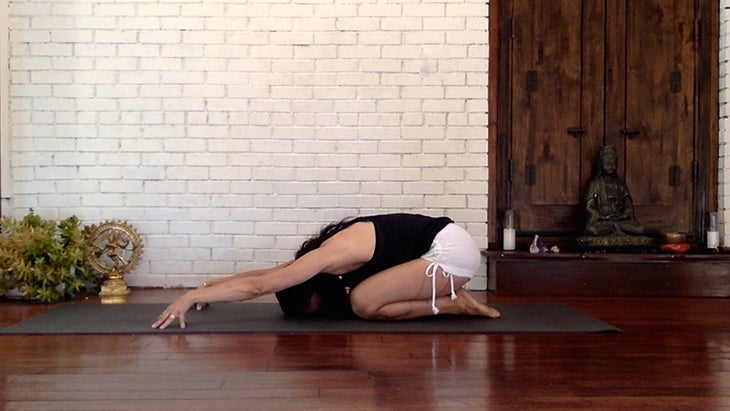
Balasana
Bring your big toes together, knees slightly apart and the ribs can rest on the thighs. Straighten and extend your arms, lifting shoulders, elbows and even wrists away from floor. Support the forehead with a block or blanket if the floor feels far away. Breathe, pause, soften, and relax.
See also 4 Steps To Free Yourself from Fear of Inversions
Downward-Facing Dog
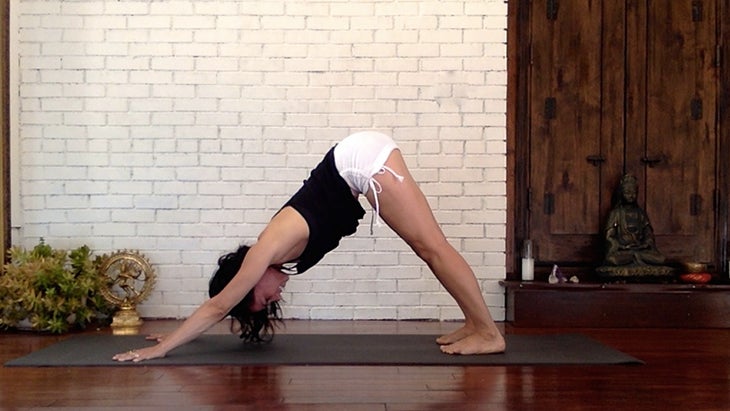
Adho Mukha Svanasana
From Child’s Pose, place palms flat, rooting down into all knuckles of the hand and slightly draw up with the center of the palm. Externally rotate your upper arms so the collarbones widen and the trapezius tugs the shoulder blades away from the ears. Tuck toes and lift knees to straighten the legs. Extend through your arms and legs, dropping the heels toward the floor. Ground down into the four corners of the feet (big toe ball, inner heel, baby toe ball and outer heel) while lifting the arches. Lift hips up off the waist by actively pressing the thighbones back. Press the tips of your shoulder blades toward the chest while the front ribs knit together toward the waist. Draw navel back toward spine. Broaden the back of your sacrum by internally rotating the thighs. Lengthen the neck and let the head be heavy. Elongate the spine and enjoy the breath. Rest the gaze on a steady space (drishti) and breathe. By steadying the eyes and smoothing the breath, the mind begins to shift toward a meditative awareness of one-pointed focus (ekagrata). Stay here for at least 5 breaths.
See also Your Arm Balances + Inversions Need More Jackie Chan
Plank Pose
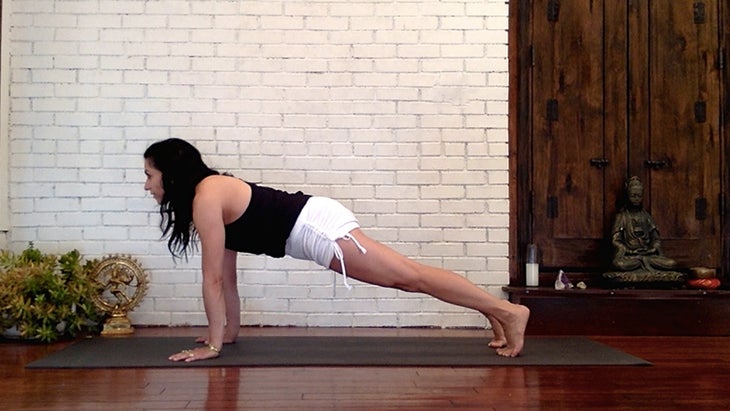
From Down Dog, keep the palms flat, knuckles rooted and shift forward to bring shoulders over wrists. Hoist the legs up while reaching the tailbone toward the heels. Dome the back bottom ribs and reach the sternum forward. Energetically draw hands and feet together to engage the core. Build up to a 1- or 2-minute hold. Slow steady breath.
See also Prep Poses for Inversions: Yoga Practice Tips + Video to Defy Gravity
Locust Pose
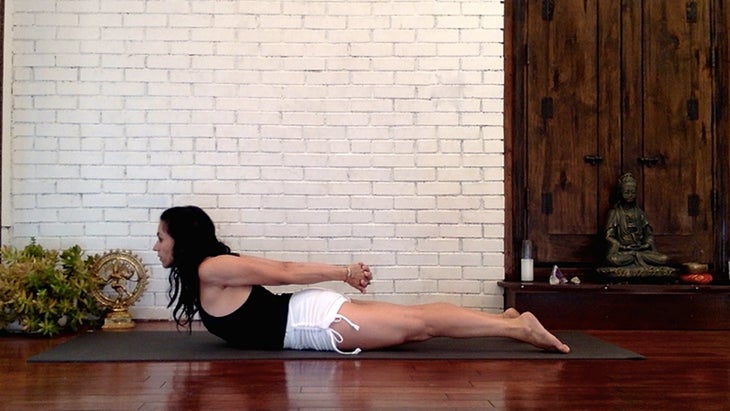
Salabhasana
Lie on the belly. Interlace the fingers behind the back. Press into all 10 toenails into the floor to lift the knees and tone the quads. Lengthen the tailbone toward the heels. Lift the hands up to widen across the chest and open the shoulders. Enjoy the lungs’ easy capacity to breathe here. Stay for at least 5 breaths. Use the shape of the upper back in Locust Pose as an invitation to stay this open for the rest of the sequence. Change the cross of the fingers and repeat.
See also Q&A: How Can I Tell if I’m Ready for Inversions?
Lunge
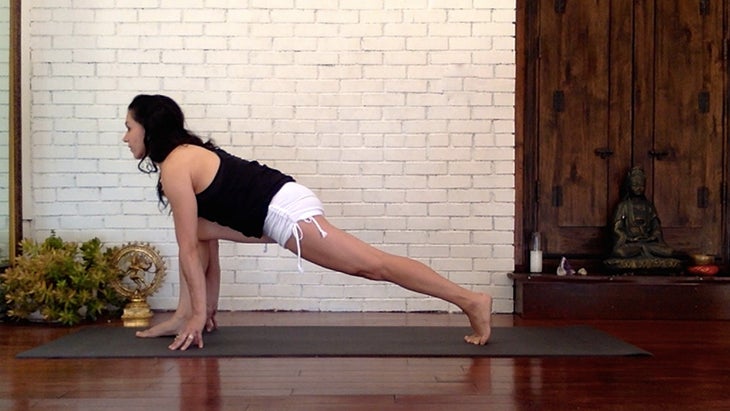
Bend the front knee to a right angle directly above the ankle. Lift the back heel high and press the back thigh up. Hug the navel toward the spine and spread the collarbones wide. Stay for at least 5 breaths. Switch legs and repeat.
See also Build Essential Strength for Inversions
Lunge Twist, Variation 1
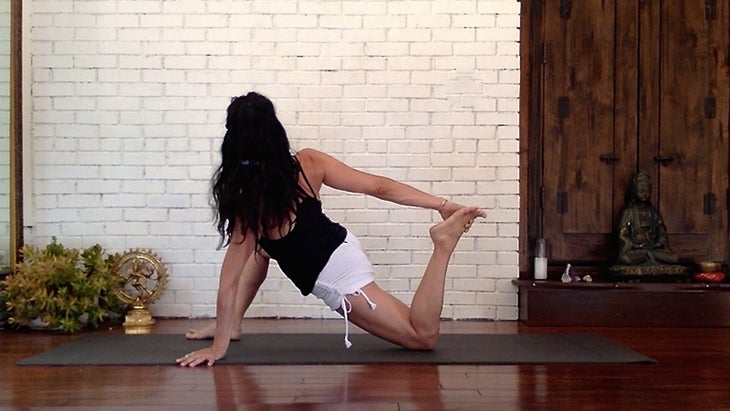
From a lunge, turn the front foot out, drop back knee down and slide it away from the front foot. Reach with the opposite hand to clasp the back ankle. Kick the bound foot away from the body to open the shoulder and chest. Create space in the lower back by lifting the chest away from the hips while bringing the belly toward the back and lengthening tailbone toward pubic bone. Extend on the inhale and revolve on the exhale. Stay for at least 5 breaths.
See also Boost Immunity with Inversions
Wide-Legged Standing Forward Bend

Prasarita Padottanasana C
From standing, step the feet wide apart and parallel to each other. Interlace the fingers behind the back. Lift the hands and shoulders up while folding over, leading with the chest. Ground the four corners of the feet down while lifting the arches. If it’s possible to straighten the legs, then lift the kneecaps to engage the quadriceps and protect the hamstrings. Hang the head heavy or rest it on the floor or a block. Lengthen the neck. Each exhale lifts the navel and allows for a deeper fold. Come back to standing with a flat back. Change the crossing of the fingers and repeat. Keep hands lifted or extend them overhead toward the floor. Stay for at least 5 breaths.
See also Q&A: Why Can’t My Strong Student Do Inversions?
Dolphin Pose
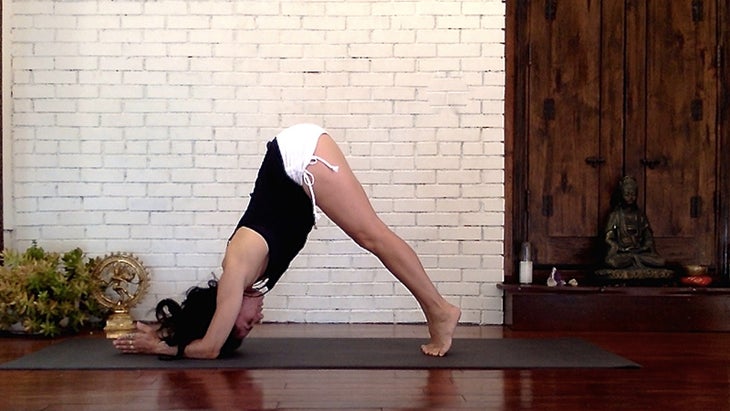
This variation may be explored for years or a lifetime before ever lifting a foot off the ground. It is the gateway to all of the inversions that follow and can be practiced in place of or to prepare for any of them.
From Down Dog, place elbows, forearms and wrists on the mat. Palms can be down flat or together in prayer. Hug the elbows toward each other. Spin the biceps forward and the triceps back. Lift the shoulders up and pierce the tips of the shoulder blades in toward the chest. Cinch the front ribs together and tone the abdomen. Let the head hang. Straighten the legs and actively press the thighbones back toward the hamstrings. Elevate the heels for more core engagement. Tip-toe the feet closer to the face to prepare for the inversion. Stay for at least 5 long, smooth breaths. Come down and rest in Child’s Pose.
See also 4 Steps To Master Dolphin Pose
Headstand (Sirsasana)

Practice with knuckles against a wall until you feel comfortable and confident to explore balancing in the middle of the room. Alternately, stay and work with one of the two Dolphin variations.
From Child’s Pose, place elbows, forearms and outer wrists down on mat. Interlace fingers and thumbs. Tuck the bottom pinky into the cup of the hands. Set the crown of the head down on the mat between the forearms. Press down through the wrists and elbows to lift the shoulders up away from the ears. Hug the elbows in and widen the collarbones out. Pull the tips of the shoulder blades in toward the chest while taking the sides of the waist back. Flex the toes, lift the knees up off the floor, walk each into the chest and then extend each leg up to the ceiling. Stretch the tailbone up to heels and the heels up to the ceiling. Pull the toes back toward the knees and the knees toward the hips. Soften the temples and the jaw to breathe free and easy breaths. Stay for as long as comfortable or work toward a 3-minute hold. After 3 minutes the benefits of the inversion genuinely begin to take effect. Come down and rest in Child’s Pose.
See also Know When it’s Time for Inversions as a Beginner
Handstand (Adho Mukha Vrksasana)
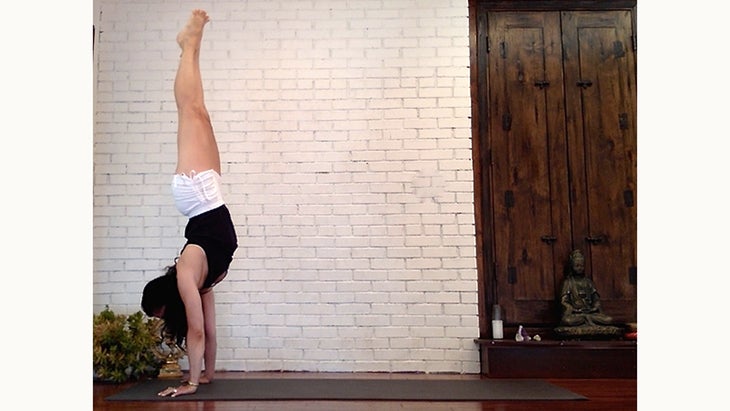
A wonderful way to release any compression from the neck, Handstand can be practiced to counter Headstand or as a preparation for the shoulders and back before Headstand. Practice this pose at a wall forever or until you feel comfortable with exploring balance in the middle of the room. Alternately, stay and work with one of the two Dolphin variations.
From Down Dog, step one foot halfway forward and lift the other leg up as you did in One-Legged Dolphin. Hopping with one knee to chest or kicking up one leg at a time are both great ways to come into this inversion. Root the corners of the hands down into the floor equally. Grip the mat with the fingertips. Wrap the outer upper arms back and widen the collarbones. Press the tips of the blades strongly in toward the chest while the front ribs hoist up toward the navel. Reach up through your tailbone, legs and heels. Tone and tighten the legs. Spread the toes. Breathe into this invigorating inversion. Stay for as long as is comfortable. Come down and rest in a forward fold or Child’s Pose.
See also Do You Have a Royal Fear of Inversions?
Supported Bridge Pose

Setu Bandha Sarvangasana
Lie down on your back. Bend your knees and ground the soles of your feet parallel to each other. Lift your hips and interlace your fingers beneath your back. Tuck your shoulders under and toward the spine to lift the armpits and chest up and broaden the collarbones apart. Press down through the outer wrists of your hands and the inner heels of your feet. Lift the outer hips up and release the inner thighs down. Lengthen the lower back by extending the tailbone toward the back of the knees while doming the chest toward the chin. Keep the jaw and chin soft and the throat relaxed. There should be no pressure on the neck—make sure it is lifted at C7 between the shoulders. Slide a block, bolster or blanket under the sacrum. Breathe into the upper back and out of the lower belly. Stay for several minutes and when ready add the next variation. Come down onto the back and rest.
See also Why Avoid Inversions During Menstruation?
Corpse Pose

Savasana
Lie down and relax. At its most fundamental, yoga is a practice of letting go. This essential shape is included in every practice. The organs of perception become quiet and allow a profound inner stillness to infuse consciousness. In the ultimate surrender of Savasana, the practitioner releases all control: muscular, skeletal and even respiratory. The breath, free and spontaneous, flows in its own organic rhythm, inducing states of deep calm. Stay as long as possible—and enjoy.
See also Q&A: Is It Safe to Do Inversions with High Blood Pressure?
About Clio Manuelian
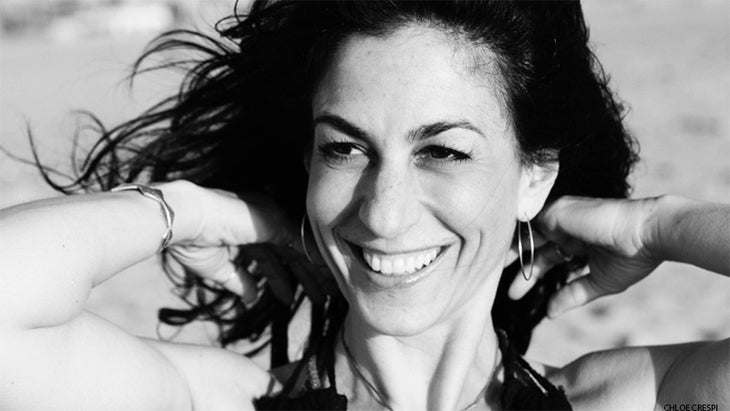
Clio Manuelian is a student, mother, wife, a follower of the sun, the fun, the flow. She is an ex-New Yorker, a former fashionista, an enlightened mind-in-training, a hot tea fiend, a composter, a chanter, a recovering type A, an emissary for joy, and an ERYT-500 through YogaWorks. For Clio, yoga is a practice, a challenge, a calming, a calling, a community, a religion, her health, her home and the Hanuman monkey on her back since 1995. She teaches public classes and Teacher Trainings at Equinox and Wanderlust in Los Angeles and leads international retreats. At the core of her teachings is a celebration for our capacity to expand, love and live more fully. She’s ever grateful to all her teachers—Tias Little, Lisa Walford, Joan Hyman, Annie Carpenter, Ruth Lauer-Manenti and Elena Brower—and every student who teaches her how to look, listen and connect more joyously.
Deepest gratitude to Tias Little and Lisa Walford for their illuminating teachings that are reflected here.